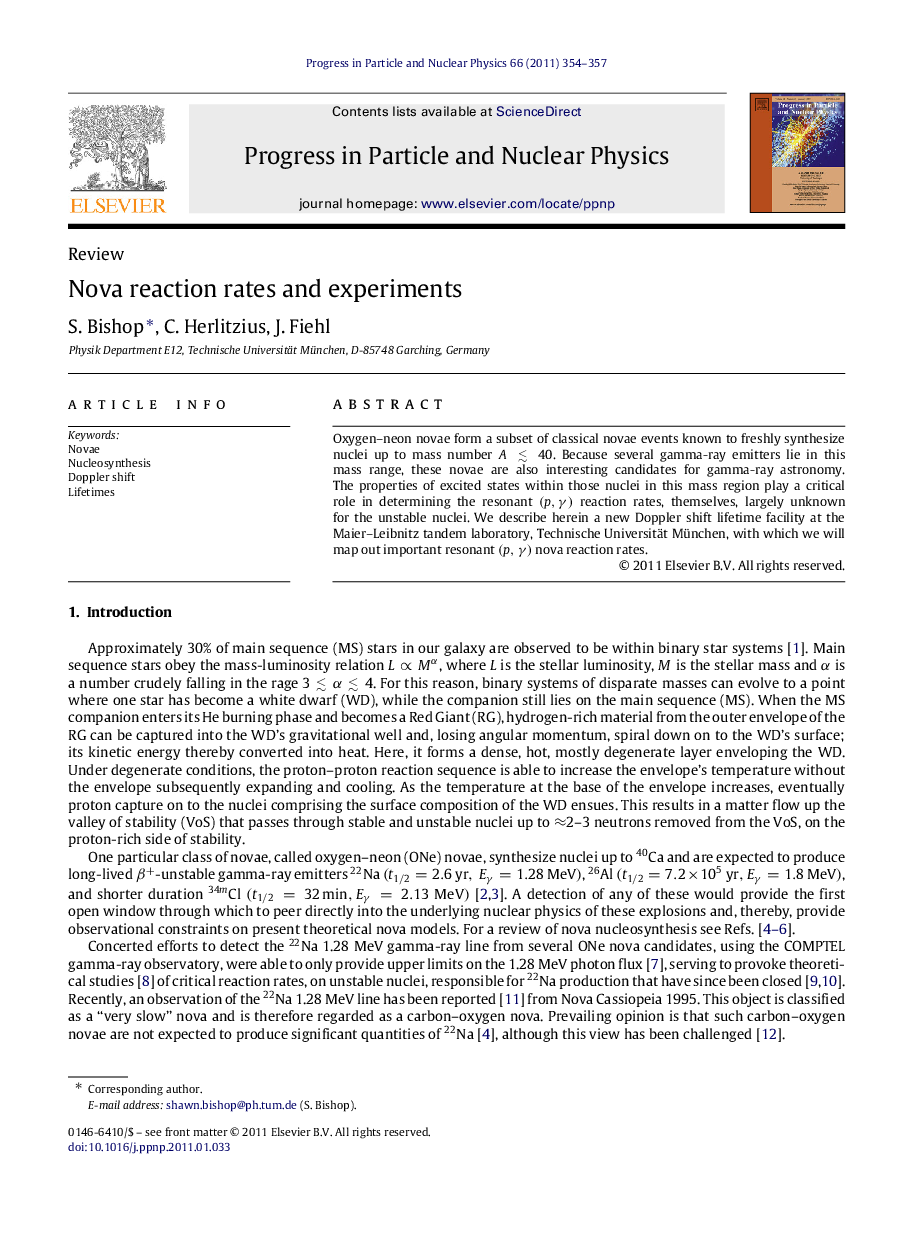| Article ID | Journal | Published Year | Pages | File Type |
|---|---|---|---|---|
| 1854525 | Progress in Particle and Nuclear Physics | 2011 | 4 Pages |
Abstract
Oxygen–neon novae form a subset of classical novae events known to freshly synthesize nuclei up to mass number A≲40A≲40. Because several gamma-ray emitters lie in this mass range, these novae are also interesting candidates for gamma-ray astronomy. The properties of excited states within those nuclei in this mass region play a critical role in determining the resonant (p,γ)(p,γ) reaction rates, themselves, largely unknown for the unstable nuclei. We describe herein a new Doppler shift lifetime facility at the Maier–Leibnitz tandem laboratory, Technische Universität München, with which we will map out important resonant (p,γ)(p,γ) nova reaction rates.
Related Topics
Physical Sciences and Engineering
Physics and Astronomy
Nuclear and High Energy Physics
Authors
S. Bishop, C. Herlitzius, J. Fiehl,
